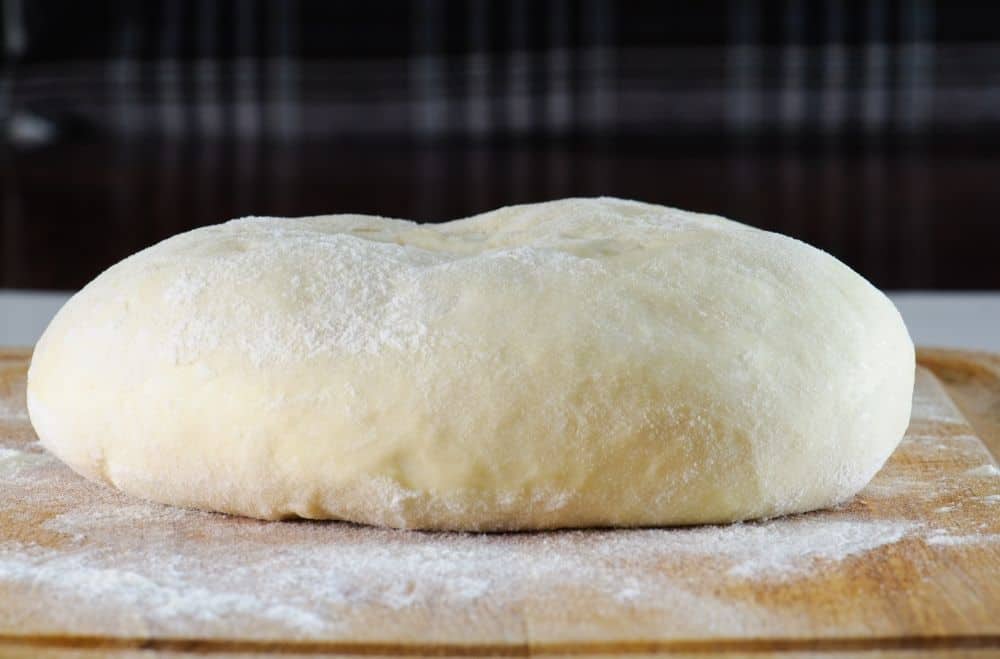
We’ve all experienced the disappointment of eagerly anticipating a delicious, homemade loaf of bread, only to find that the dough just didn’t rise. While it might be tempting to throw it out and start fresh, there are actually several creative and tasty ways to make the most of your deflated dough.
One possible reason for dough failing to rise is expired or inactive yeast, which is unable to produce the necessary carbon dioxide to cause the dough to expand. But fear not; this doesn’t mean your dough is a lost cause. With some ingenuity, you can turn your unrisen bread dough into delicious treats that will save the day and leave everyone satisfied.
In this article, we’ll explore some fantastic recipe ideas to put your failed bread dough to good use. From savory flatbreads to sweet treats, these recommendations will showcase how a little creativity can turn a kitchen mishap into a culinary triumph.
Reasons for Dough Not Rising
Expired Yeast
One common reason for the dough not rising is using expired yeast. Yeast is a living organism, and over time, it loses its ability to produce carbon dioxide, which is necessary for dough to rise. Always check the expiration date on your yeast packet and opt for fresh, active yeast when possible.
Incorrect Temperature
Dough may not rise if the temperature is too cold or too hot. Most dough recipes require a warm environment for yeast to thrive, typically around 75-85°F (24-29°C). Beware of exposing the dough to temperatures above 120°F (49°C), as it may kill the yeast and prevent the dough from rising.
Sugar and Salt Effects
Salt and sugar can impact dough rising. Salt strengthens the gluten protein strands and slows down yeast activity, which may affect the dough’s ability to rise. On the other hand, sugar provides nourishment to the yeast, but excessive sugar can slow down yeast fermentation. Balancing the levels of salt and sugar in your dough recipe is crucial for proper dough rising.
Inadequate Kneading
Kneading the dough is essential to develop the gluten network that provides structure and helps the dough rise. Inadequate kneading can result in a dough that does not rise well. Aim for 8-10 minutes of kneading for most dough recipes, adjusting as needed based on the dough’s elasticity and feel.
Humidity and Environment
Humidity and the overall environment can affect dough rising. In general, dough rises better in a warm and slightly humid environment. However, excessive humidity can cause the dough to become sticky, heavy, and difficult to work with. To counteract this, adjust the amount of flour and water in your dough recipe based on the environmental conditions of your kitchen.
Ways to Salvage Unrisen Dough
Fixing the Proofing Process
If your bread dough hasn’t risen, the proofing process might be the culprit. To help the dough develop gluten and rise properly, place it in a warm environment for a longer period. You could also try increasing the liquid added to the dough to facilitate gluten development.
Repurposing Dough for Flatbreads and Pizza
Instead of throwing away unrisen dough, consider using it to make flatbreads or pizza. Simply roll out the dough to the desired size, add toppings, and bake as usual. This way, you can create a delicious meal without wasting any dough.
Creating Bread Rolls and Buns
Another great solution for unrisen dough is making bread rolls and buns. Divide the dough into smaller pieces, shape them accordingly, and then bake. These may not have the same volume measurements as regular bread, but they will still taste great.
Making Breadcrumbs and Croutons
Repurpose your unrisen dough into breadcrumbs or croutons. Cut the baked dough into small pieces and let them dry out in the oven, ensuring they’re crispy. For croutons, you can use them on salads or to make crostini as a tasty appetizer.
Transforming Dough into Dessert Recipes
Don’t forget, unrisen dough can be turned into mouth-watering desserts. For example, you can make bread pudding by combining the baked dough with a mixture of milk, eggs, sugar, and cinnamon. This way, your unrisen dough transforms into a delightful and comforting dessert.
Tips for Preventing Dough Failures
Choosing the Right Yeast
There are different types of yeast available, such as active dry yeast and quick-rise yeast. It’s essential to choose the right one according to your bread recipe. Additionally, ensure that the yeast is not expired, as expired yeast cells may hinder the dough from rising. For a natural alternative, use a homemade sourdough starter.
Paying Attention to Dough Texture
While preparing bread dough, pay close attention to its texture. A dough that is too dry or too wet may not rise properly. Typically, a well-kneaded dough should be smooth and slightly tacky. If needed, adjust the flour or water in the recipe to achieve the desired dough consistency.
Properly Measuring Ingredients
Accurate measurement of ingredients is crucial to make the dough rise as expected. Use the right equipment, like measuring cups and spoons, to ensure proper proportions. Avoid eyeballing or guessing the amounts, as it may lead to failed bread attempts. Always follow the recipe precisely for the best results.
Controlling the Proofing Environment
The dough-rising process is sensitive to temperature and humidity. A warm place is ideal for yeast activation and dough development. In colder months, like winter, you may need to find a suitable spot, like an oven with a container of boiling water underneath. Cover the dough with a tea towel to maintain a consistent temperature and protect it from drafts. Avoid putting the dough in the refrigerator or a humid environment, as it may slow down or inhibit the yeast activity.
